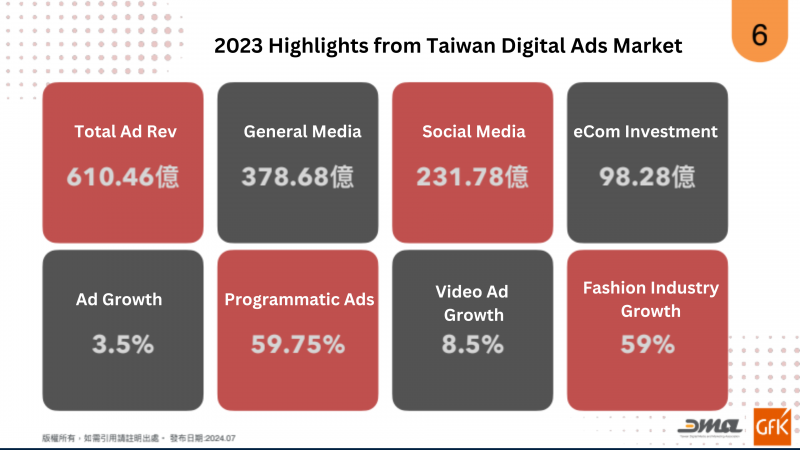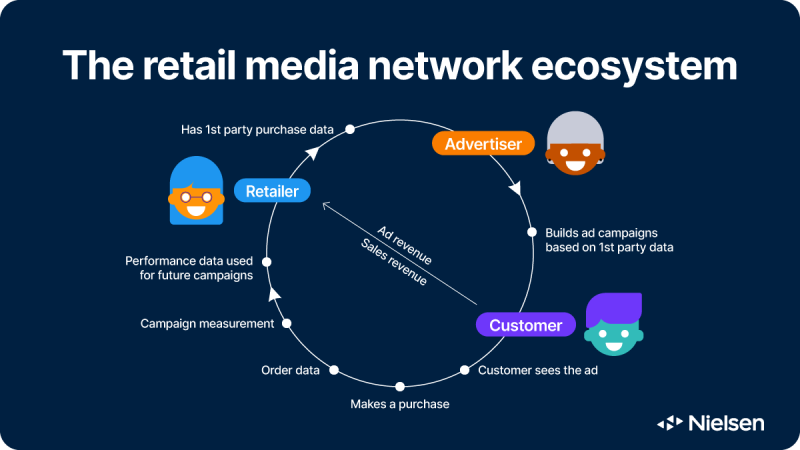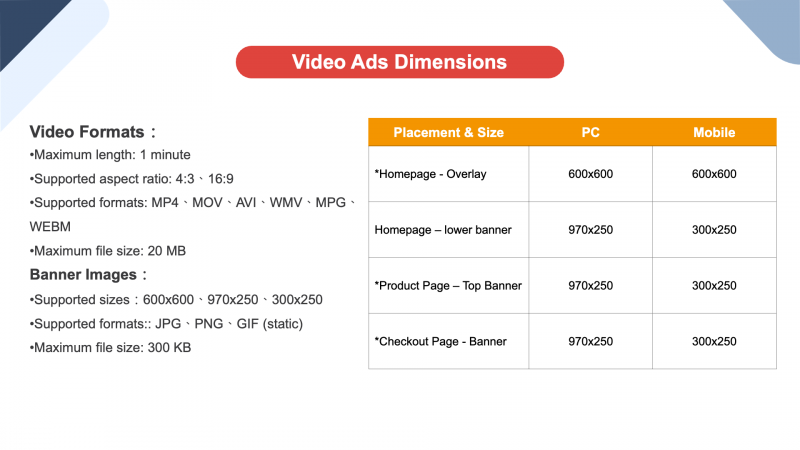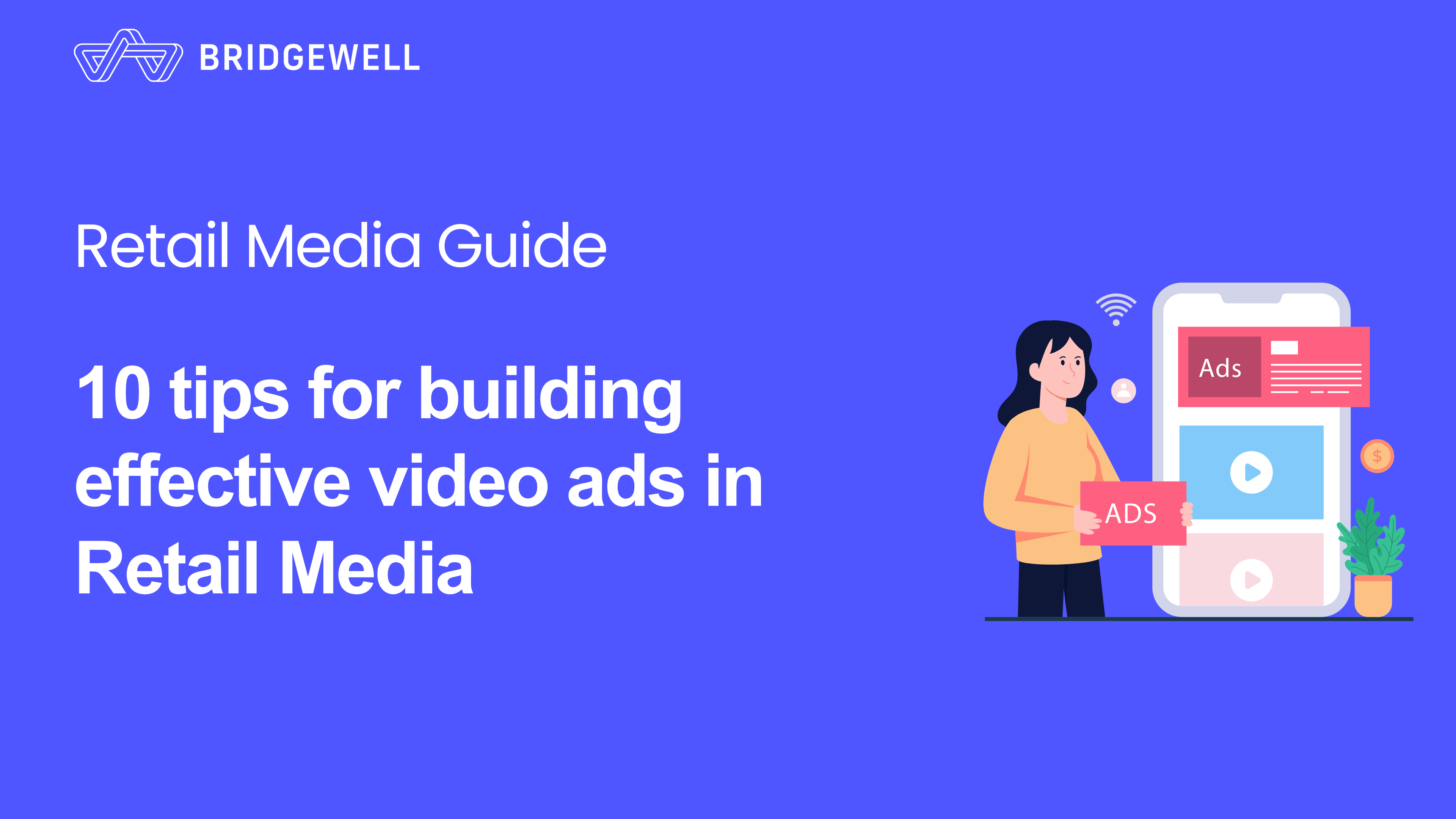As an inherently engaging format with interactive elements, video advertising can further leverage its strengths when combined with retail media data. By using more precise audience data, video ads can deliver tailored content and creative materials to communicate effectively with consumers at every stage of their purchasing journey.
–
Video Advertising & Retail Media Network
Video advertising is a well-established media format, primarily used for brand exposure and increasing brand awareness. Through creative and story-driven video content, brands can spark consumer interest and encourage interaction. Unlike typical display ads, video ads facilitate higher engagement and resonance. In today’s data-driven digital age, video ads are no longer confined to the top of the funnel but also play valuable roles in mid-to-lower funnel stages.
In the retail media landscape, video advertising can serve the following roles:
- Providing Brand Awareness: Video ads capture consumer attention by leveraging both visual and auditory stimuli, making brand messages more memorable.
- Enhancing Consumer Engagement: Compared to static display ads, video ads are more likely to attract consumer interest and interaction, fostering higher brand engagement and loyalty.
- Precision Targeting: Using retailers’ first-party data, video ads can target specific consumer segments, maximizing reach to audiences most likely to make a purchase.
- Omni-Channel Coverage: Video ads can be displayed across various channels, including retailer websites, apps, and in-store digital signage. With integrated consumer data, retailers can achieve true cross-channel marketing.
- Data-Driven Performance Measurement: Through RMN, brands can track the consumer journey from ad view to purchase, enabling a better assessment of ad effectiveness and ROI.
According to a DMA report, video advertising was the fastest-growing media format in Taiwan’s advertising market in 2023, with both streaming and traditional video seeing substantial brand investment and growth potential.

Source: DMA 2023 Taiwan Digital Ad Spend Report
–
The Synergy of RMN Video Advertising and Retail Data

Source: Nielsen
While the format and use of video ads have not seen drastic innovations, the integration of retail media data has empowered advertisers to leverage more precise and contextually relevant data, thereby enhancing brand exposure within a closed-loop e-commerce environment. Video ads can also drive mid-to-lower funnel advancement.
Compared to other ad formats, such as display ads, video ads are uniquely effective in brand marketing strategies, including:
- Preference for Video Content: Modern consumers increasingly prefer video content over text, making video ads a natural fit with today’s content consumption trends. Platforms like TikTok, Instagram Reels, and YouTube Shorts highlight this resurgence in video as a key method of capturing audience attention.
- Cross-Platform Experiences: Video ads can be broadcast across multiple platforms, from TV and streaming services to social media and digital ad networks, enabling a wider audience reach. Modern video platforms also offer detailed analytics, allowing advertisers to track and optimize ad performance.
- Eye-Catching Format: Video ads tend to deliver a higher ROI due to their strong potential to capture and influence viewers, encouraging consumers to take the next step. Video ads also enhance consumer engagement with the brand, making it a powerful medium for increasing brand impact.
With its inherently engaging format and interactive elements, video advertising, when combined with retail media data, can harness targeted audience insights to deliver tailored messaging across the consumer journey.
–
Use Cases of RMN Video Advertising
Video ads possess high appeal and immersive qualities, making them a mature media format in retail media applications. In retail-focused, consumer-centric experiences, RMN video advertising excels. Below are some use cases for RMN video advertising:
1. Personalized Shopping Experience
Consumers browsing fitness equipment on a retailer’s website can see video ads tailored to their browsing history, providing relevant information on the equipment or training plans. With retail data, brands can serve video content to different audience segments, such as gym introduction videos for unregistered users or wellness product ads for regular fitness enthusiasts. By combining data with creative content, brands can better meet consumer needs, enhancing the shopping experience and boosting conversion rates and brand engagement.
2. Retail Digital Signage
For retailers with both online and offline channels, maximizing marketing resources across channels is key. Retailers with physical stores can leverage in-store digital signage for ad exposure without compromising store space. Video ads on in-store displays can significantly enhance product understanding and brand visibility.
3. Integrated Online-Offline Ad Exposure
A unified video ad across RMN channels ensures consumers experience consistent messaging whether they’re on mobile, visiting physical stores, or browsing an online marketplace. In consumer data-driven RMN, video ads build brand credibility and support consumer journeys at every stage.
–
Bridgewell RMN Video Advertising
Bridgewell supports RMN video advertising, maximizing retail media effectiveness in closed-loop systems. Coupled with display ads, it fulfills the full-funnel requirements of the consumer journey. Currently, Bridgewell’s RMN video ads support the following formats and placements on-site:
- Cover Ads
- Homepage Banner
- Product Page Banner
- Post-Checkout Banner

–
10 Optimization Tips for Creating High-Impact Video Ads
1. Define Your Goals and Audience
Focus on delivering key product information. Avoid trying to achieve too much in one video. Before production, set clear goals:
- For brand awareness campaigns, focus on creating emotional connections with customers.
- For mid-funnel or purchase-driven campaigns, emphasize product differentiation and reasons to buy.
- Thoroughly research customer interests and preferences to tailor your message accordingly. Highlight key product features and provide educational, demonstrative, and product-centric content. Consider the importance of brand storytelling to engage consumers effectively.
2. Craft a Compelling Story
Video ads excel at immersing consumers in a brand’s story. Use an engaging script and suitable product/service introductions to capture attention and guide decision-making. Choose your storytelling approach based on campaign objectives:
- Market Education: Highlight your product’s unique selling proposition, not minor features.
- Purchase Influence: Explain the benefits and value your product adds to consumers’ lives.
- Brand Differentiation: Communicate why consumers should choose your brand among competitors.
- Inspirational Videos: Use emotion-driven stories to connect with consumers, fostering brand resonance.
- Attention-Grabbing Visuals: Showcase products through appealing shots and angles to attract consumer interest.
3. Keep Video Length to 15-30 Seconds
Aim for a 15-30 second video to make a strong impression. Use the first 2 seconds to showcase the product, include key features by the 5-second mark, and ensure the product is clear throughout, especially on mobile.
4. Optimize for Mobile
Given that most users now search for products on mobile, ensure that your video’s elements (product, logo, text) are appropriately sized for a mobile screen.
5. Highlight Unique Features to Attract New Audiences
Use visual elements to build an emotional connection, focusing on key features that make your product or brand stand out.
6. Stay True to Your Brand Tone
Establishing a consistent brand identity helps distinguish your product. Align messaging and design across all advertising materials, including video ads. Ask yourself:
-
- Does the content remain true to your brand message?
- Why does your product matter to consumers?
- How does your product provide value?
- What unique qualities distinguish your product and brand?
7. Include Titles and Brand Logos
A strong headline or slogan and a recognizable brand logo help promote your product and build brand recall. Place your logo at the beginning or end of the video to reinforce brand identity. Adding a short, clear CTA like “Learn More” or “See Details” can improve ad performance.
8. Use Subtitles for a Muted Experience
With many consumers watching ads on mute, subtitles are essential. Ensure readability by using a sans-serif font like Helvetica (75 pt or 80 px), white text on a black background, and high contrast.
9. Use Local Language
Video ads rely heavily on language. Ensure that subtitles, translations, and any key text are in the local language, especially if the audio is in another language.
10. Select Suitable Background Music
Choose high-quality audio that complements the ad’s tone. Avoid low-quality, noisy, or rough tracks that might make your ad appear unprofessional.

